OddCameras.com Rolleiflex T
The Rolleiflex T is a Twin Lens Reflex
6x6 camera, made from 1958-76 by "Werkstatt für Feinmechanik und Optik Franke & Heidecke", a
German manufacturer of optical instruments, founded in 1920 by Paul
Franke and Reinhold Heidecke in Braunschweig. For a long time they made the Rolleiflex and Rolleicord series of cameras.
The company was renamed several times: into Rollei-Werke Franke &
Heidecke GmbH in 1972, Rollei-Werke Franke & Heidecke GmbH &
Co. KG, in 1979, and Rollei Fototechnic GmbH & Co. KG in 1981. As
"Rollei" they widened their product lines to small format cameras for
the consumer market and even produced film. The company was purchased
in 1995 by Samsung and sold back to its management in 1999. Then there
is a series of buying and splitting, brand selling and other movements
which are of no interest here.
There
are a lot of stories about Voigtländer and Franke & Heidecke about who made what first.
Voigtländer is probably the oldest optical company in the world. It was founded in 1797 in
Vienna, Austria, by Johann Christoph Voigtländer. Peter Voigtländer set up a sales office in Braunschweig
which was in those days the central hub in the German rail network. It
offered an easy access to the German overseas ports.
In 1845 Peter Voigtländer married the daughter of a Braunschweig
lawyer. The Vienna business was closed in 1868. Voigtländer
Braunschweig became a stock company (AG in German), Voigtländer &
Sohn AG in 1898.
Both companies are based in
Braunschweig. Tracing it down it seems as if Voigländer made stereo
cameras first, the Stereophotoskop from 1904 - 1926 with a non
focussing reflex finder and the Stereoflektoskop from 1914 - 1937 with
a focussing reflex finder. This camera was copied by Franke & Heidecke in 1921 as Heidoskop. Obviously Franke & Heidecke developed their Rolleiflex from
this Voigtländer camera. So claiming the first is very difficult to
decide. BTW: both, Franke and Heideke had worked for many years for
Voigtländer, the former as a sales manager, the latter as an engineer.
There are so many Rolleiflex models that some people make the
recognition of their features a sience of its own. I will leave it to
them and only give a rough outline, probably somewhat imprecise. The
Rolleiflex line was launched in late 1928 for 1929 and it was an
immediate success. These cameras are referred to as "Original
Rolleiflex".
In 1932 a new
Rolleiflex model was launched, at the same date Voigtländer launched its Superb.
Both cameras were for 120 film (the
older Rolleiflexes were only for 117 film), both cameras had lever
advance and both cameras had a film counter. On both the shutter was
not yet cocked by the film advance. The Superb was a top class camera
with features that the Rolleiflex did not offer yet. The Superb had
parallax compensation, a feature that Rollei introduced more than 10
years later by again copying Voigtländer. These Rolleiflex models are
now often referred to as "Old standard". There was a "New Stendard"
model from 1939 to 1941, which had shutter cocking and film advance
combined, but still needs a ruby window for the first frame.
1937 was the year of the Rolleiflex Automat model. It introduced an
automatic film counter, which senses the thickness of the film + the
backing paper to begin counting frames, so no need for the ruby window
anymore. The Automat models were built until 1956.
In 1949 a first F2.8 model was introduced. The ordinary Rolleiflexes
continued. From 1951 onwards they got letters for the model names,
there was an A model (1951-54), a B model (1954-56) and a C model
(1956-59) the latter could be ordered with or without uncoupled
selenium meter.
The E models, both, F3.5 and F2.8, were built from 1956-65 and were
prepared for the addition of a light meter, whereas the F models, built
from 1958 to the late 70s (early 80s for the F2.8 models) had a
built-in light meter. I will not cover the newer TTL metered GX models.
The T model is a simpler model, is built from 1958 to 1976 in 3 model
generations and could be ordered with or withour light meter.
The camera presented is a T Model 1 or
K8 T1, built from 1958-61. The model number indicates a1961 production.
The T1 is easily recognizeable by its gray leather covering, the other
two models a black.
Lenses:
Taking lens: Zeiss Jena Tessar 3,5/75, Bayonet I
Viewing lens: Heidoscop Anastigmat 2,8/75mm, Bayonet I
Shutter: Synchro Compur, 1 - 1/500 sec., (B), self timer, X + M sync.
Dimensions: 112 x 148 x 97 mm
Weight: 1035 gr.
Some pictures:
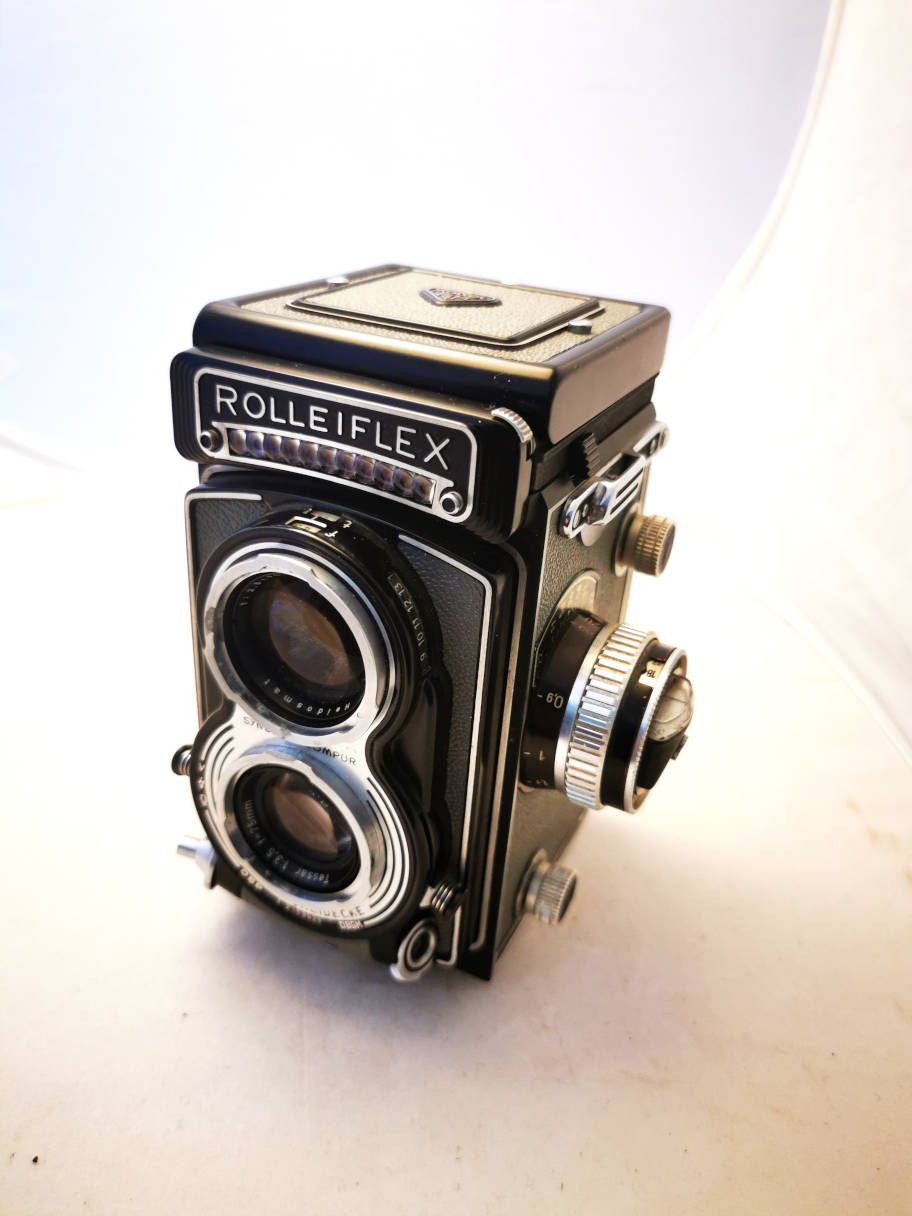
An amateur photographer's dream, more than 60 years old
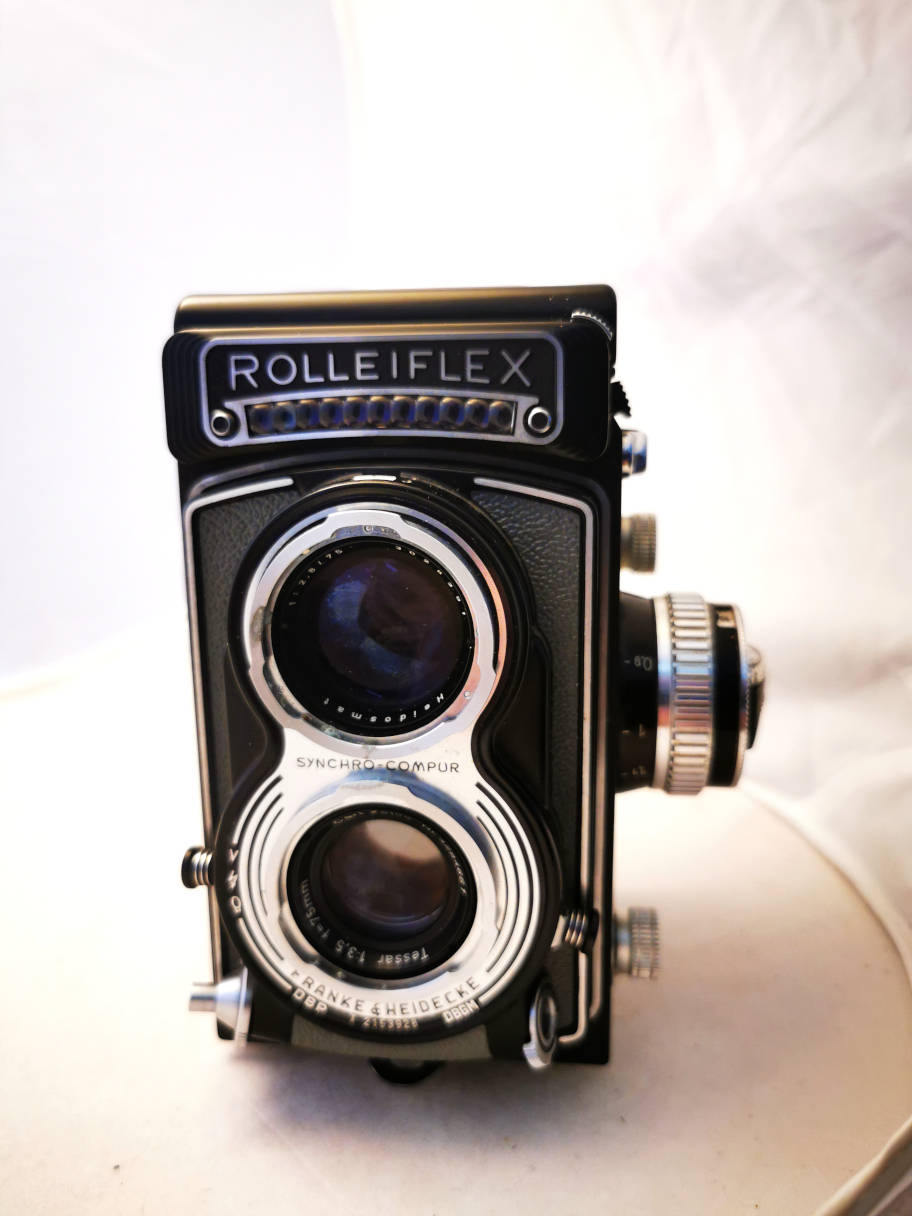
Camera
front. Under the lens, shutter release (locked), flash socket. Sync
switch (M, X and Self timer) to the left of the lens, to the right speed and aperture combination setting. Bay I on both lenses.
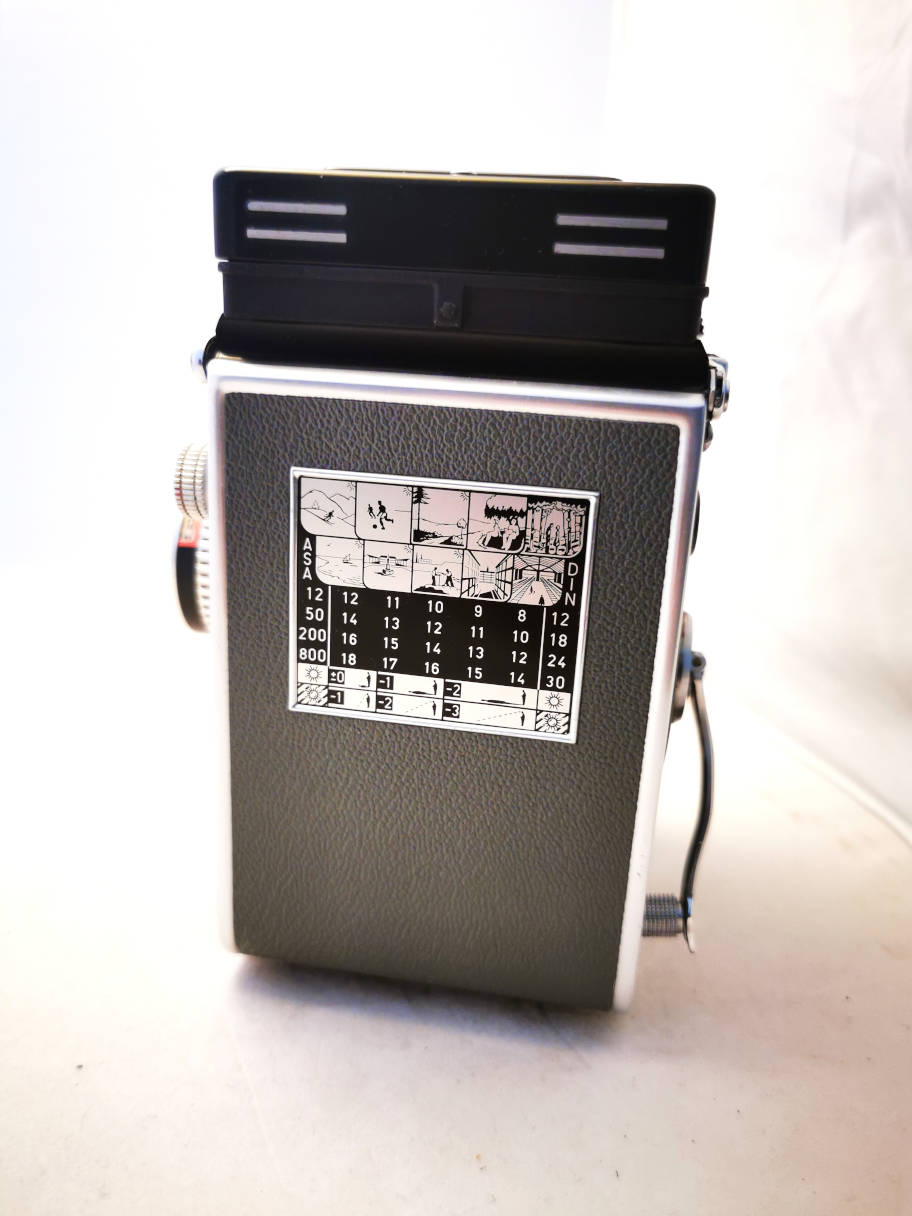
Camera
back. Exposure help.
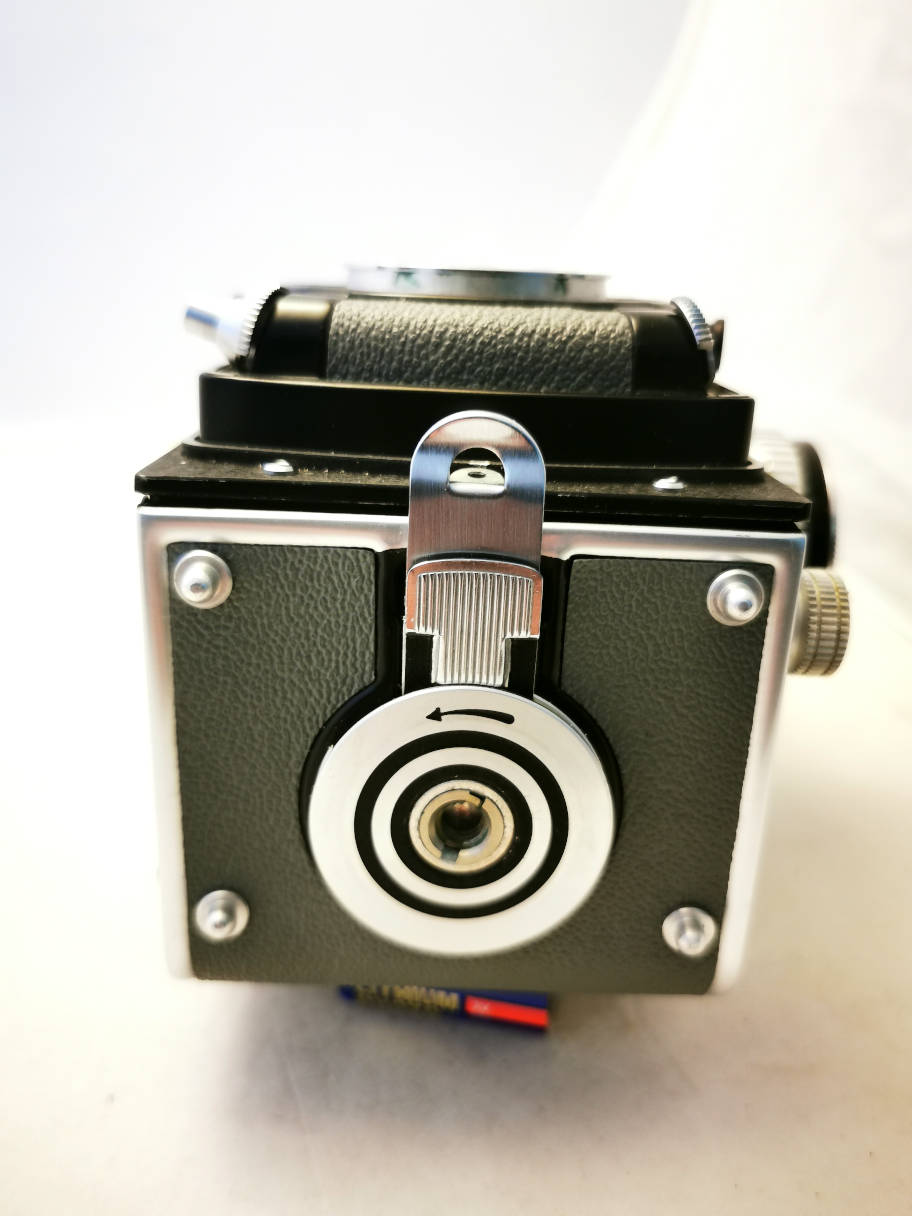
Camera bottom. Back opening tab and tripod mount.
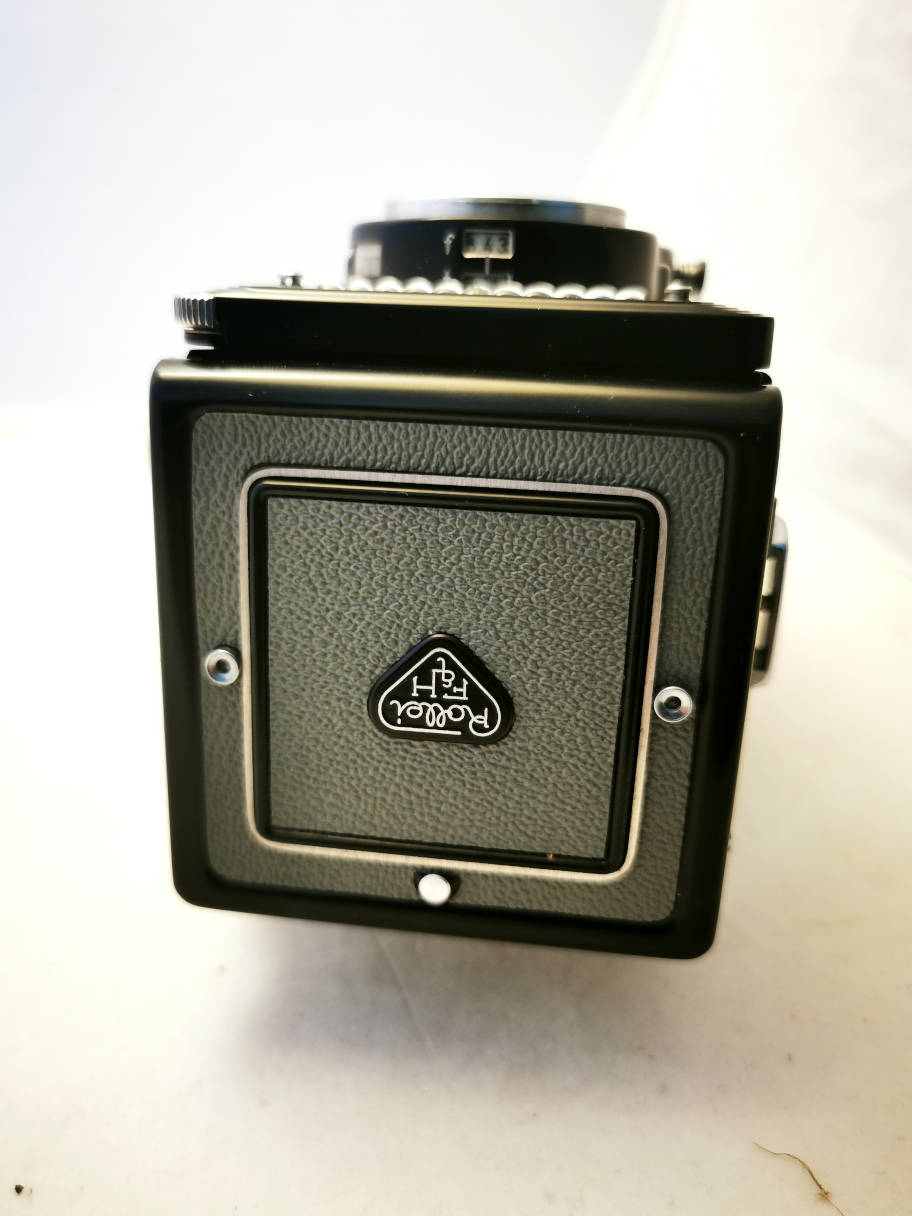
Seen
from above.
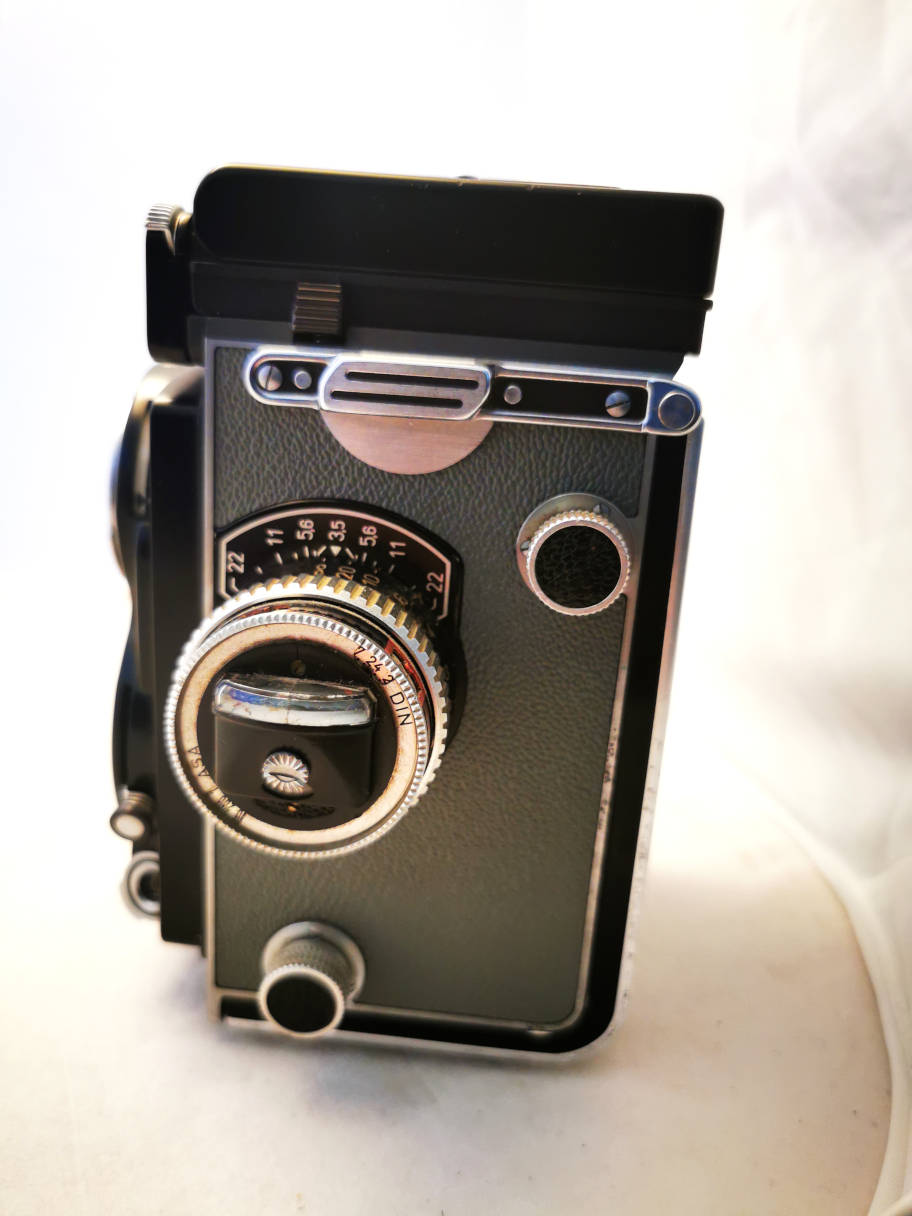
Camera
right side. Distance setting knob and 2 pegs. The exposure meter sticks
out of the knob. DIN/ISO setting on the outer ring. To change the
value, turn to either end and force a little bit, the scale will move.
Film type reminder in the center.
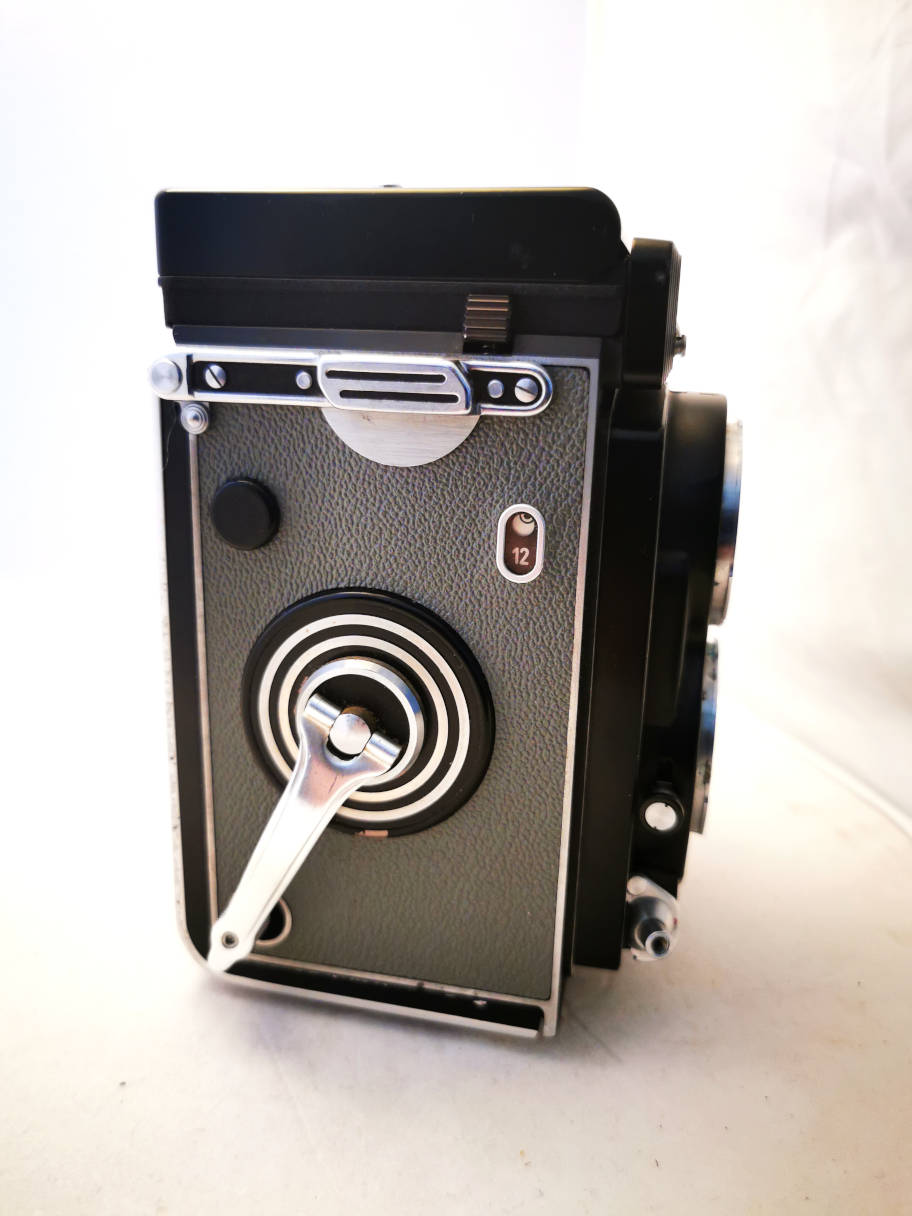
Camera
left side. Advance lever and film counter. The hood is interchangeable.
If you press down the tabs on both side, you can slide it backwards.
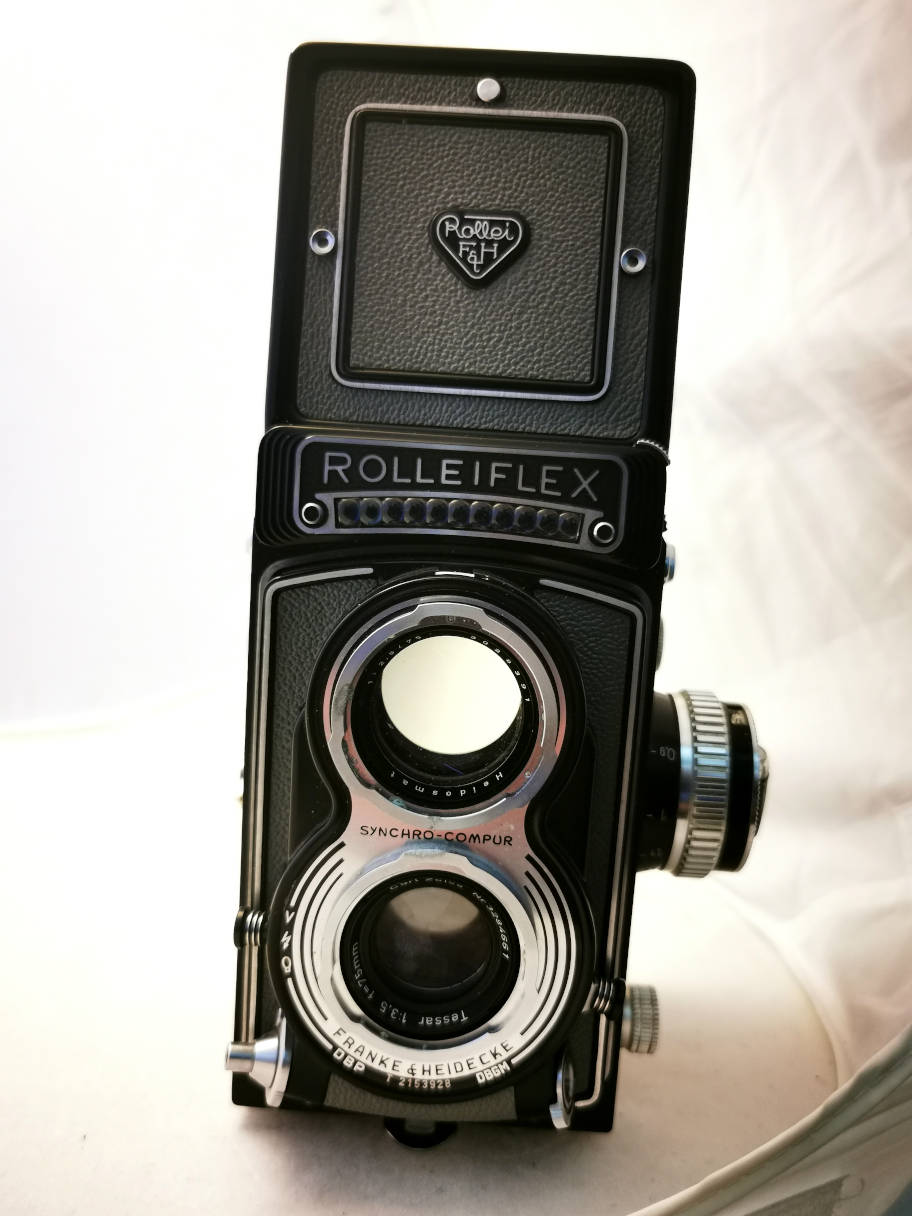
Camera open.
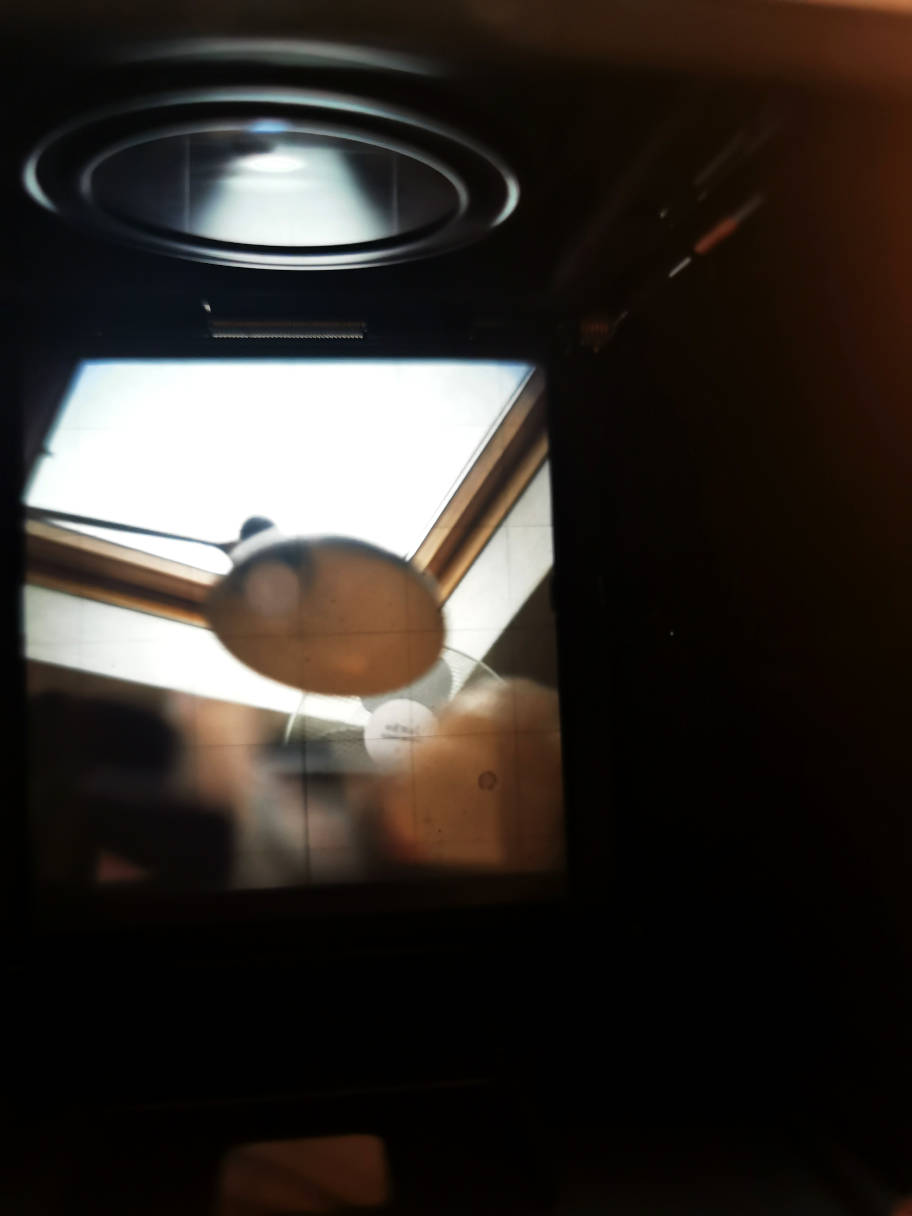
Luminous screen for those days, no fresnel yet.
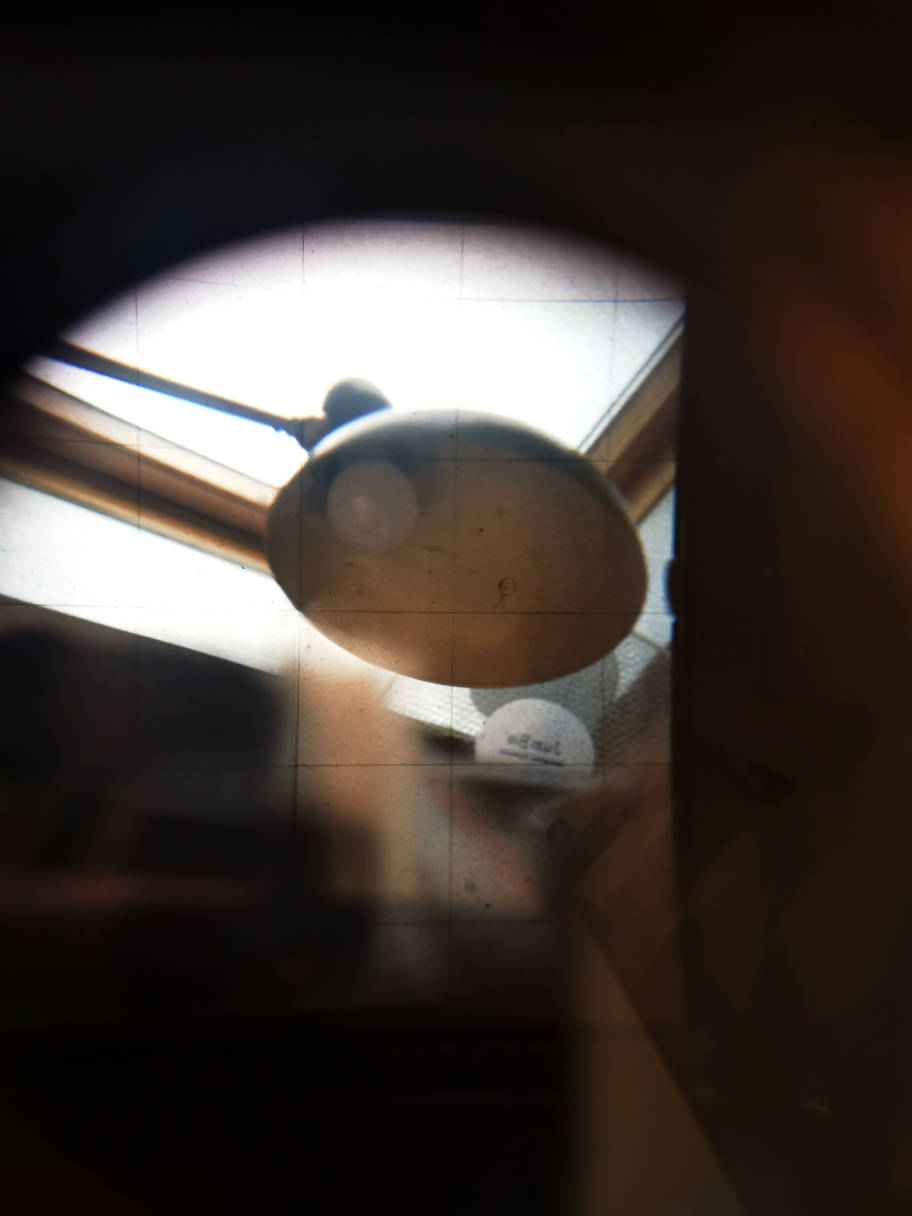
A loupe is provided.
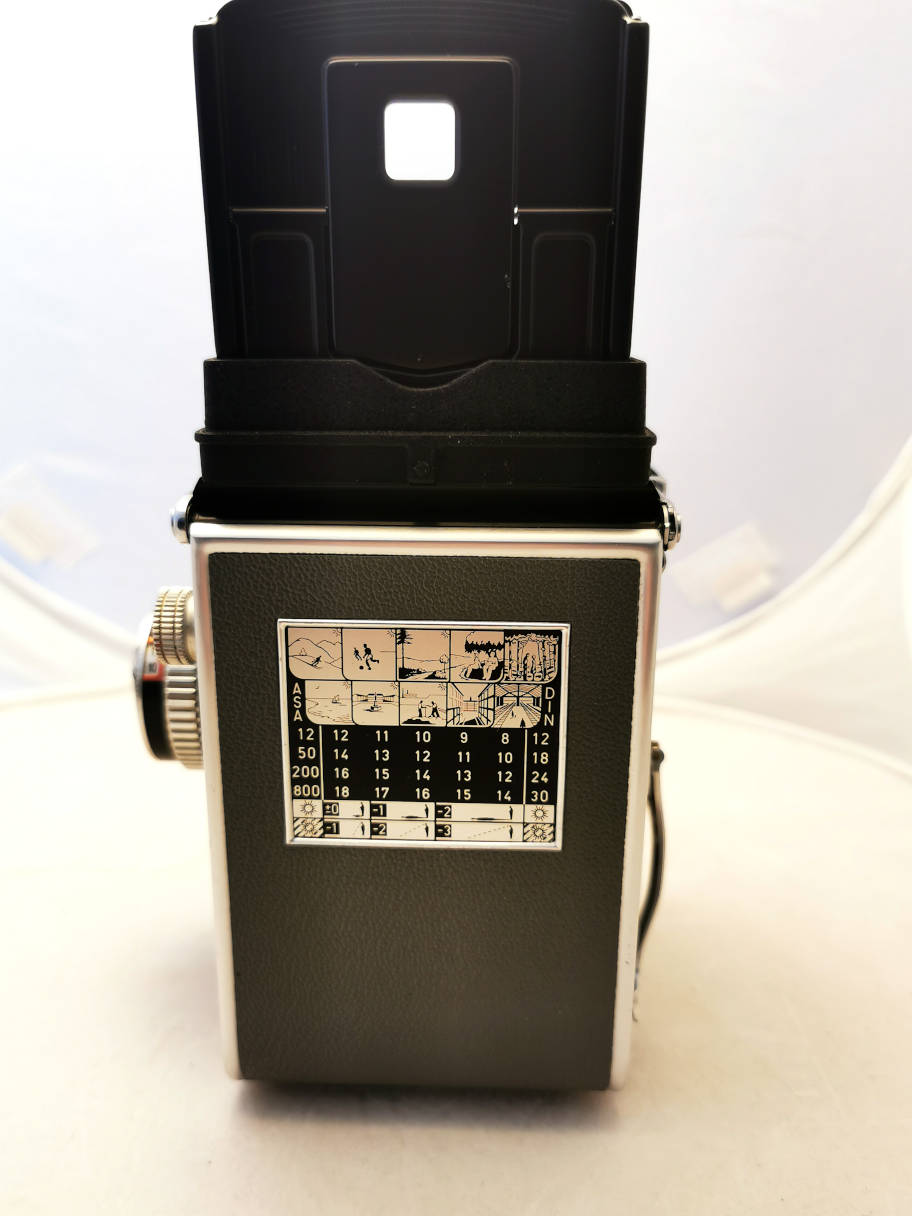
Sports finder.
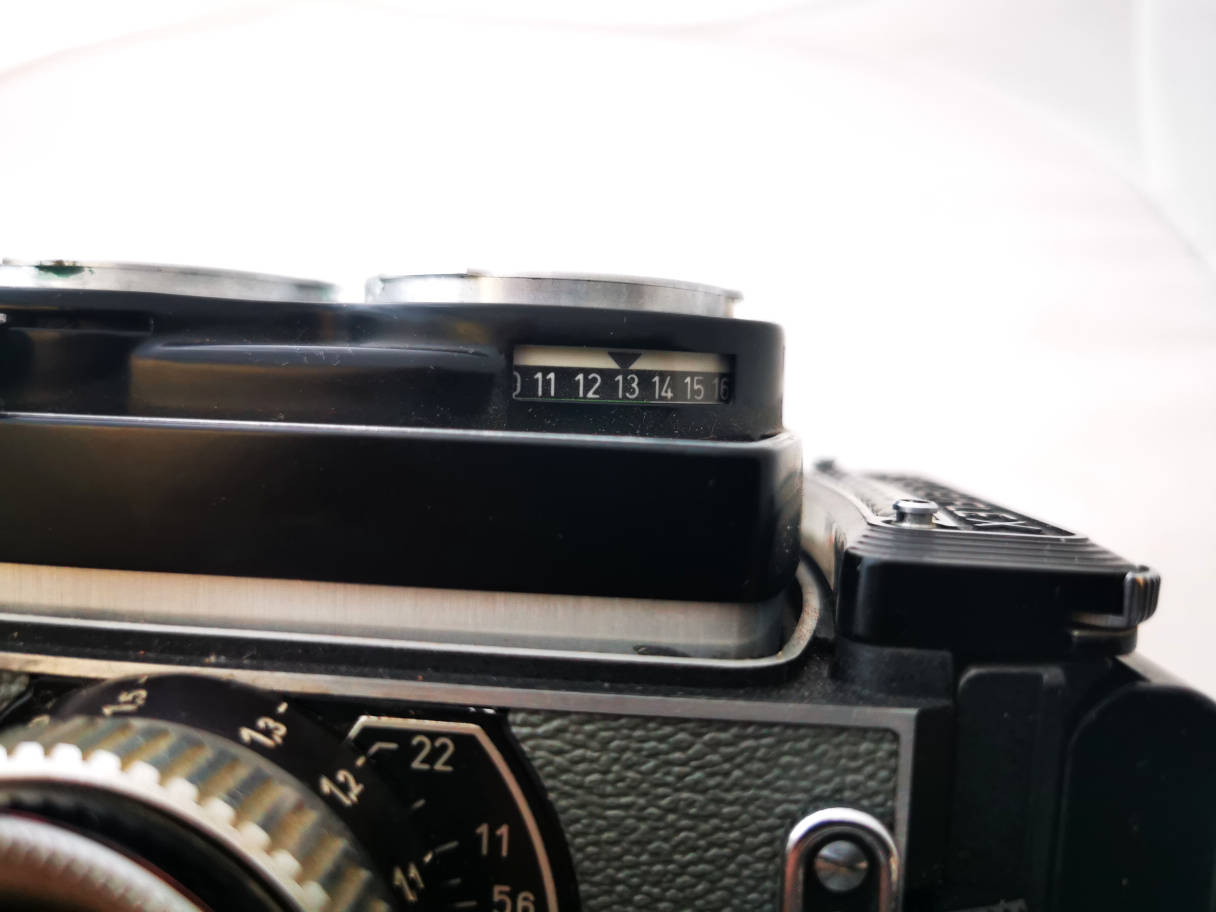
The camera uses the EV (exposure value) system. You first measure the
light and transfer the light value to the scale shown in the photo. To
change the value, pull the lever next to the lens which uncouples the
scales. Then move in either direction. If more movement is required,
Couple, move, uncouple and move further to the desired value (13 in the
picture).
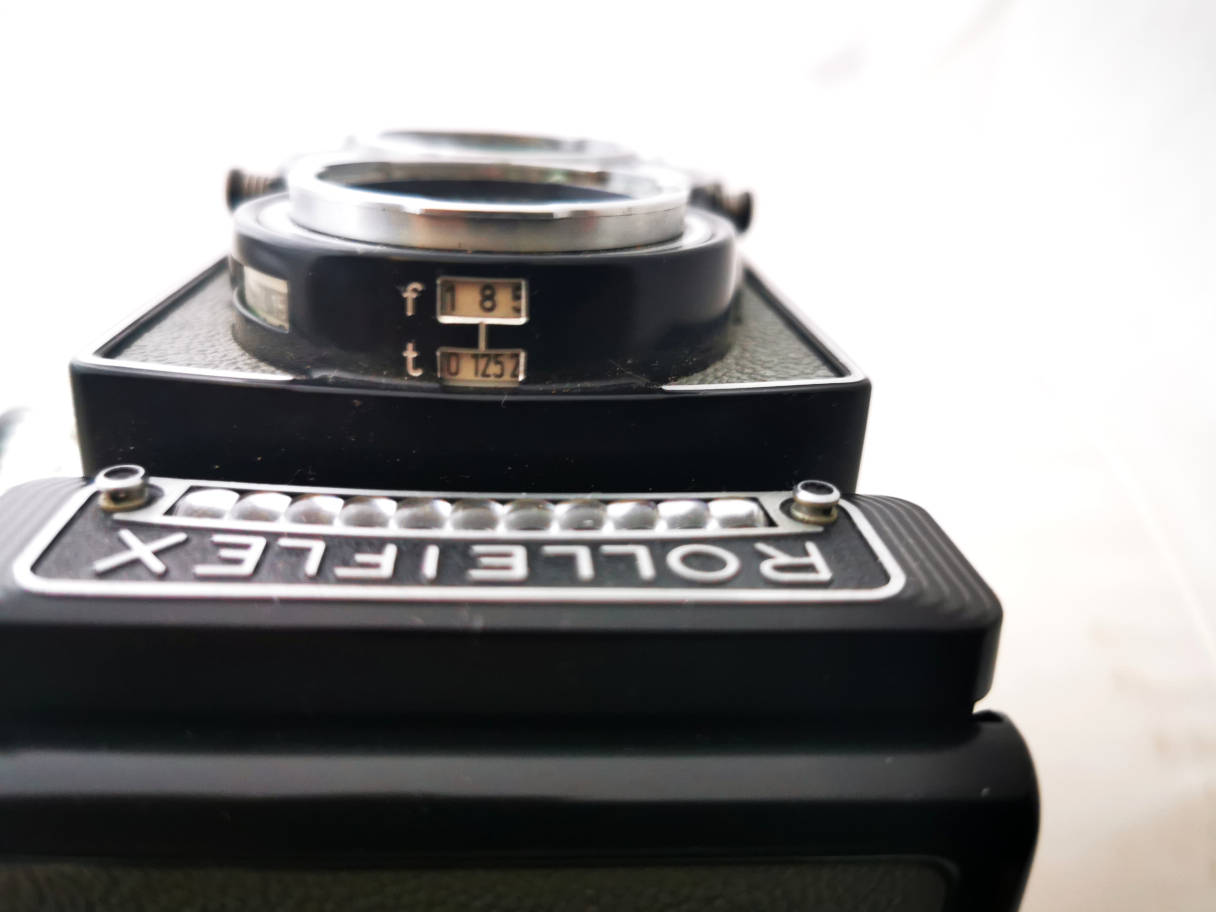
The speed and aperture are visible from above. Moving the lever next to the lens...
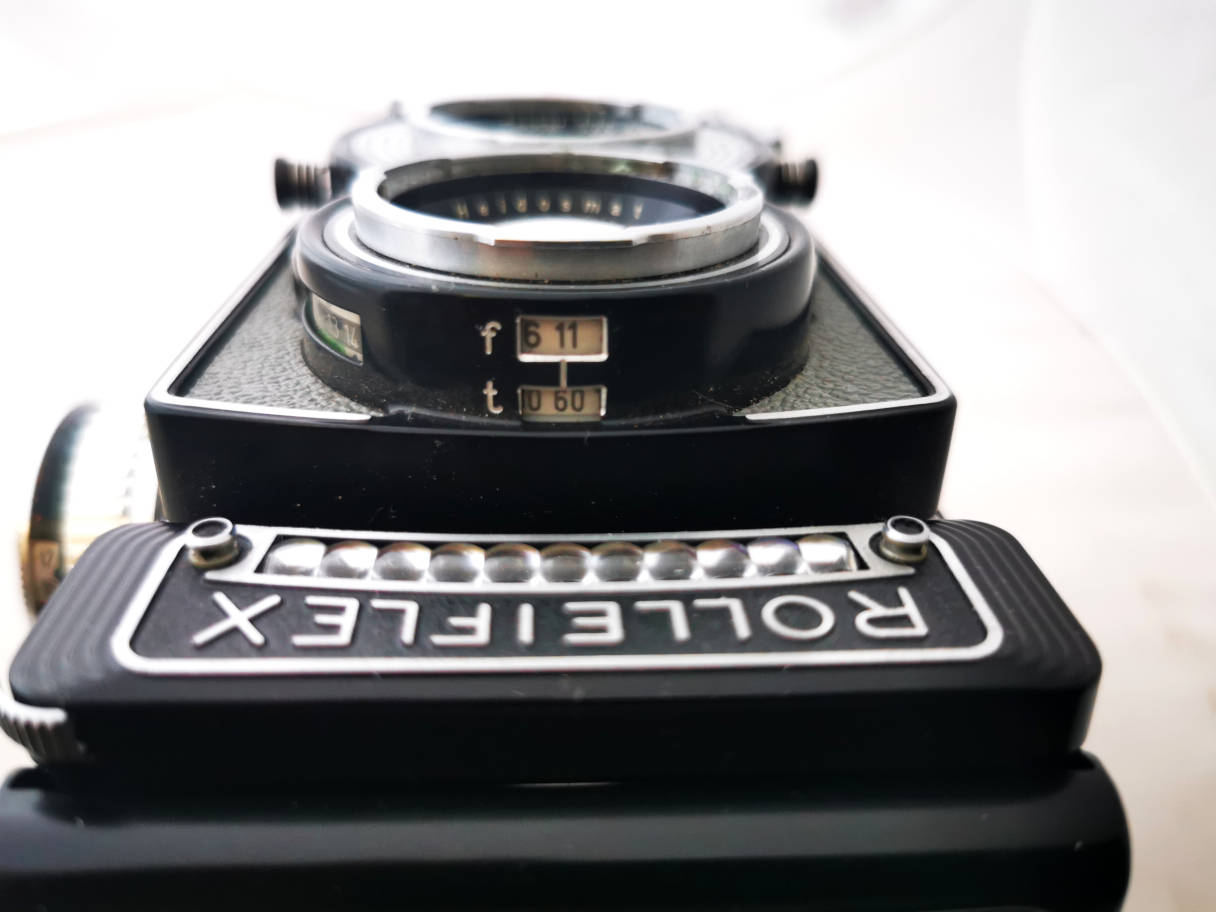
...changes both values as they are coupled according to the light that has been measured before.
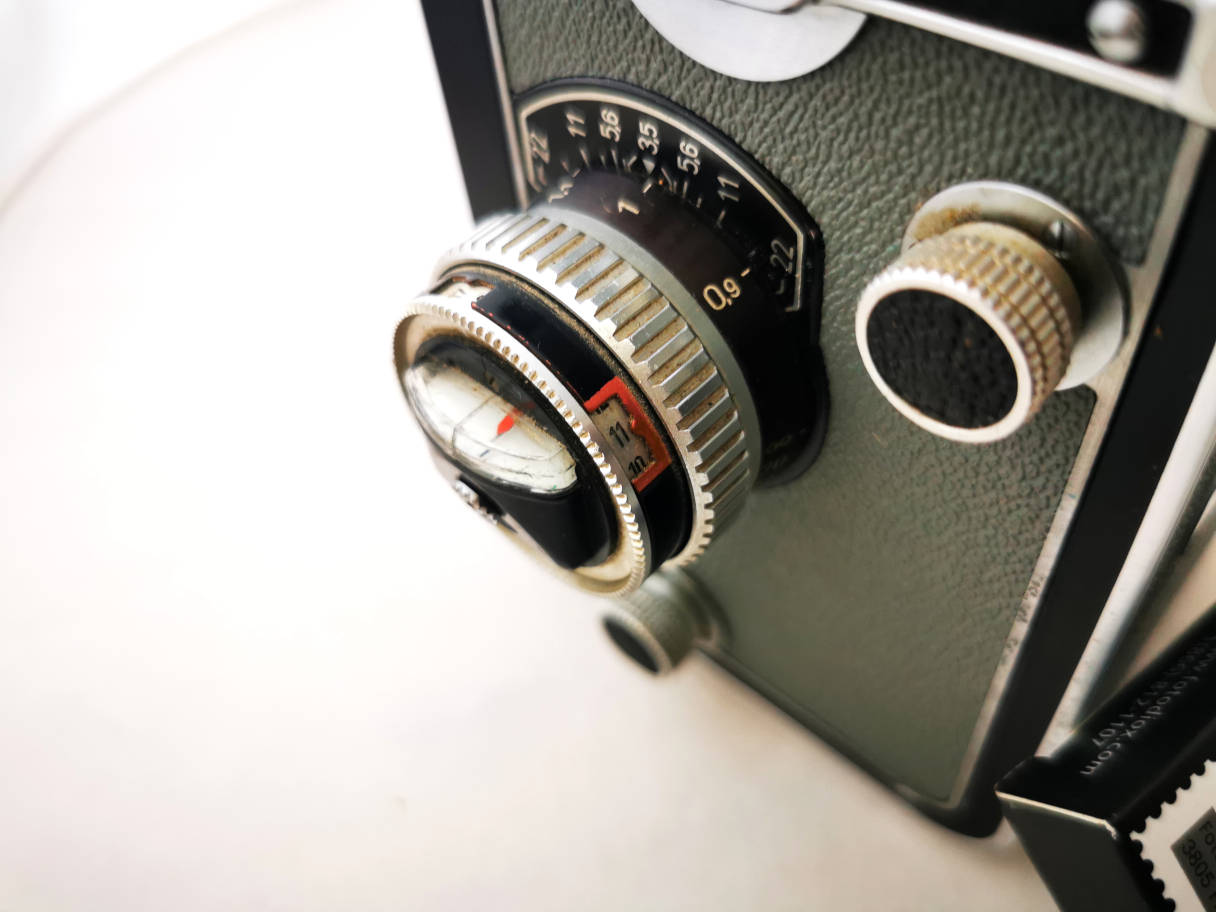
The camera meter has 2 ranges. The normal daylight range and the the
low light range. You have to move the outer ring which moves the red
pointer until it meets with the little black needle. On the picture
it's low light setting, which is the scale towards the back of the
camera, it's 11. The scale towards the front indicates the values for
normal range setting. To change the range...
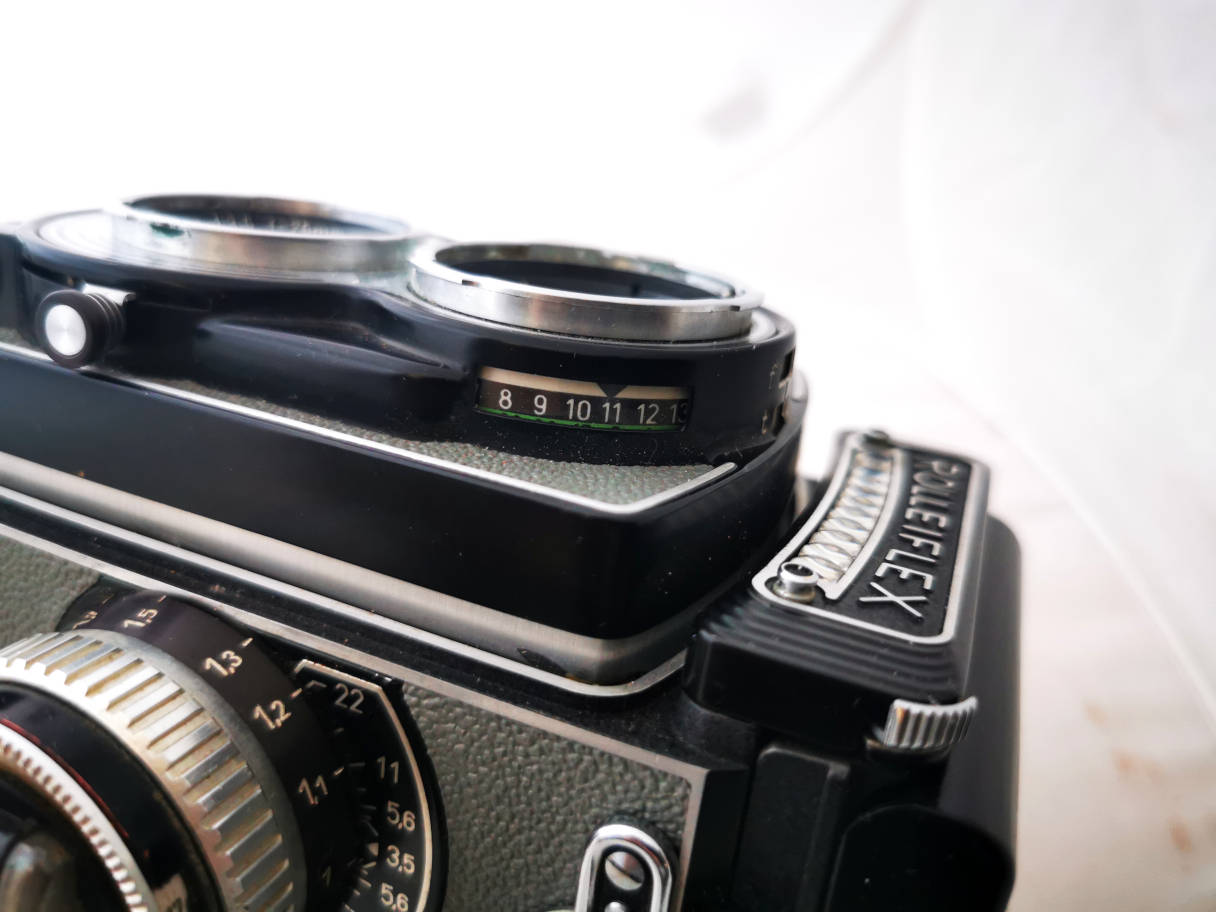
...move the little switch on the edge of the nameplate. In low light
setting a little red dot will appear next to the cell. Scale set to 11.
You can set speed and aperture independenty from the exposure value. To
do so, first select the speed in the little window above the taking
lens, lift the lever to uncouple and select the aperture by making it
appear in the window as well.
There is no ordinary B setting. Beyond 1sec. there is a
green scale with whole seconds for long
exposure times. The values are 2, 4, 8, 15, 30 and 60
seconds. These are only indications how long the exposure time should
be. At any of these values the shutter stays open as long as you press
it down, like an ordinary B setting. You have to count yourself and
release the shutter yourself. If you move the shutter lock towards lock
position with the shutter button pressed, it will keep the shutter
pressed until you move it back. This might be handy for very long
exposure times.
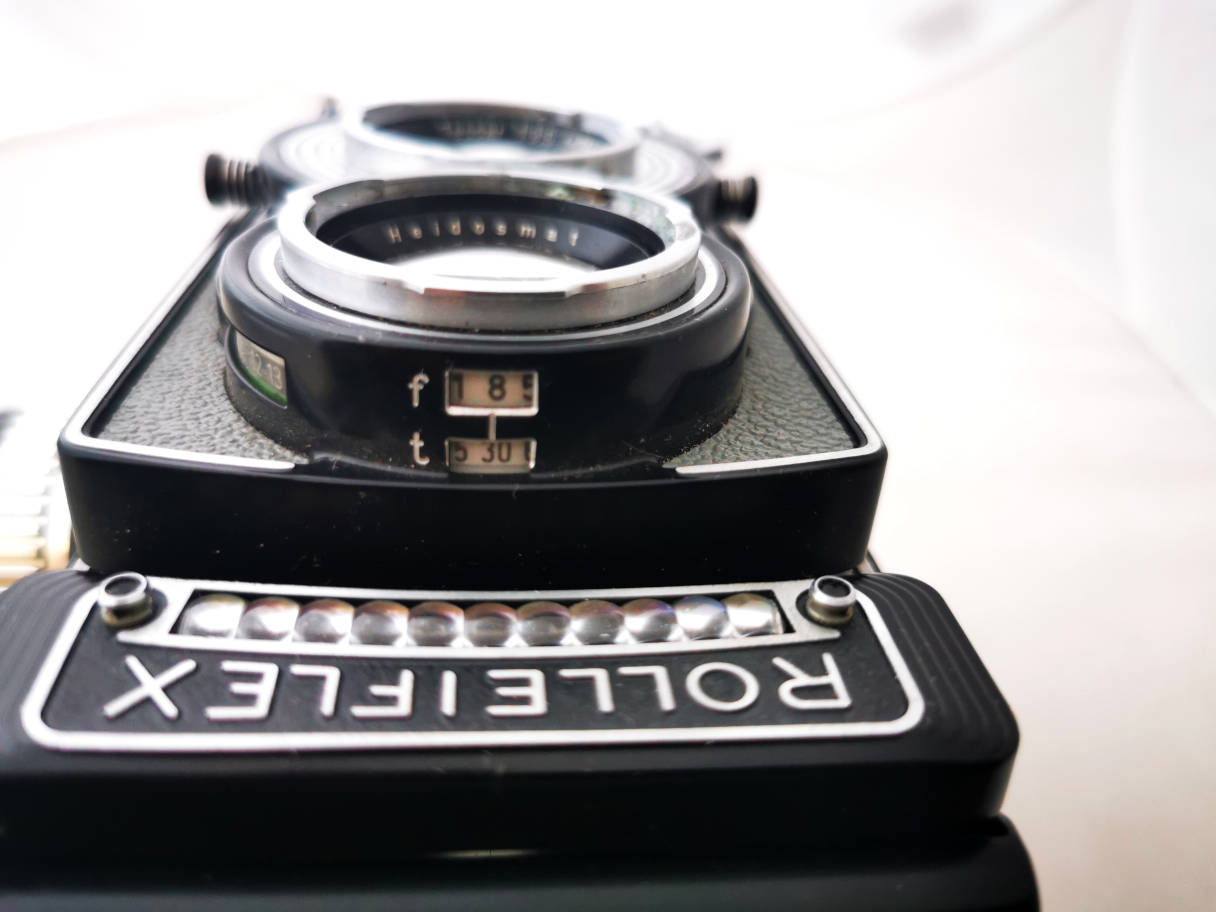
Exposure/aperture combination for low light, which is again coupled and can be changed.
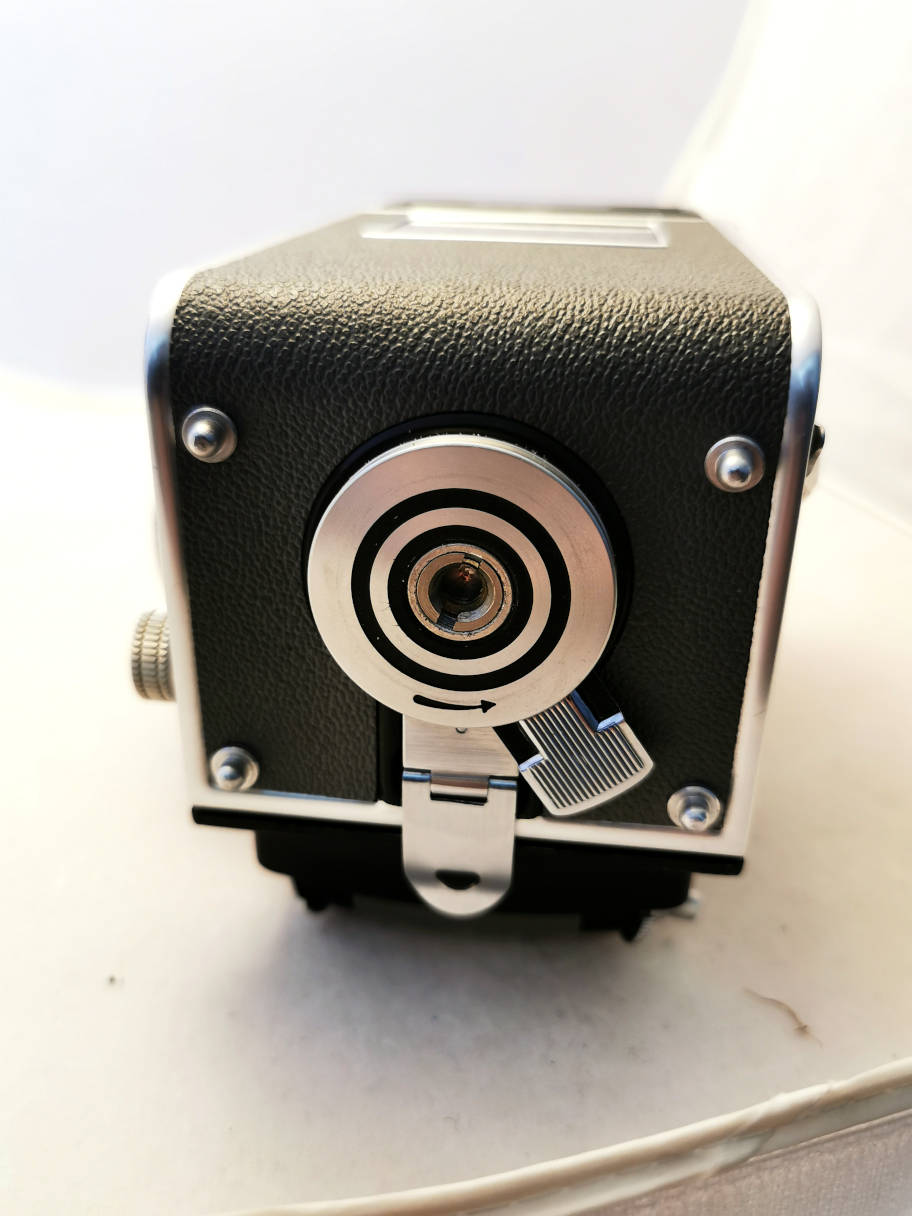
Back flap unlocked.
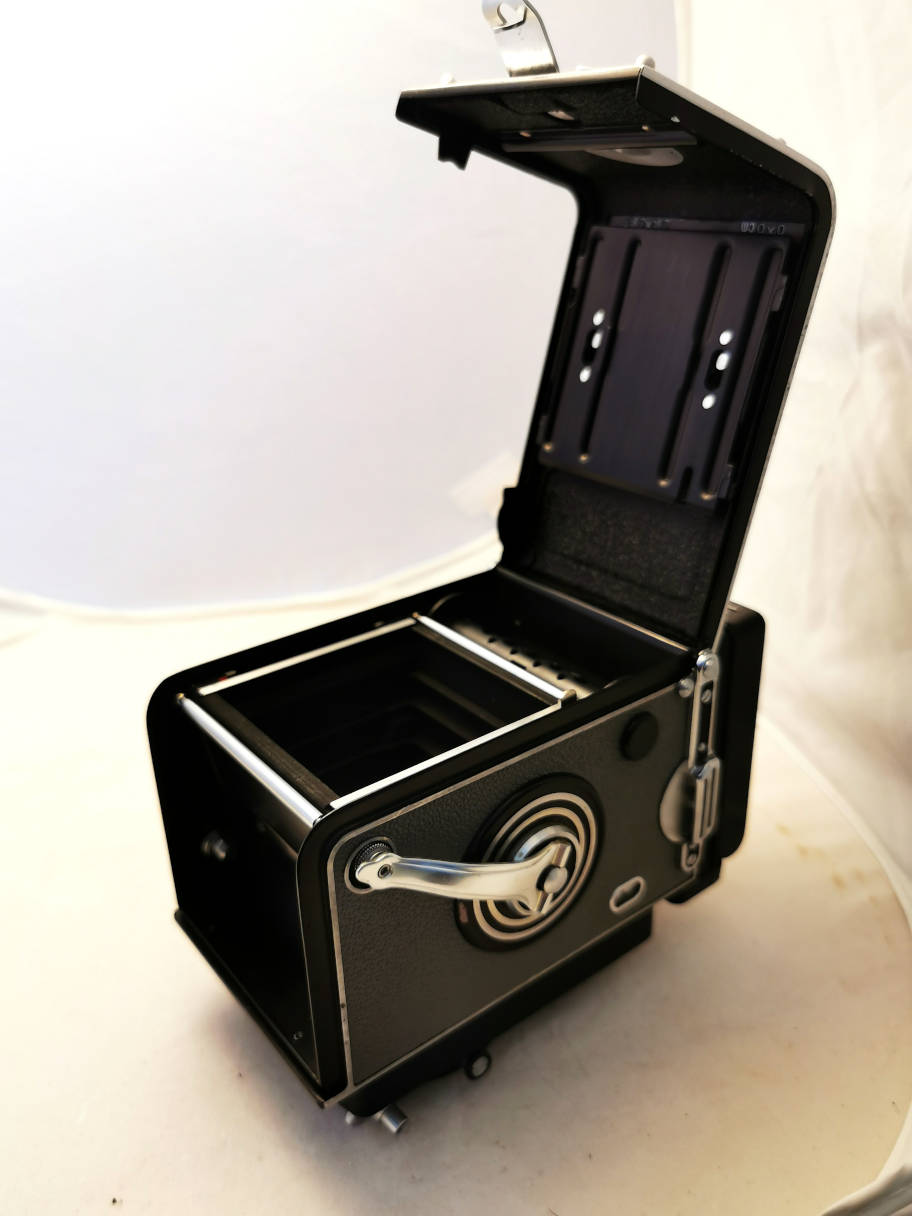
Back flap open,
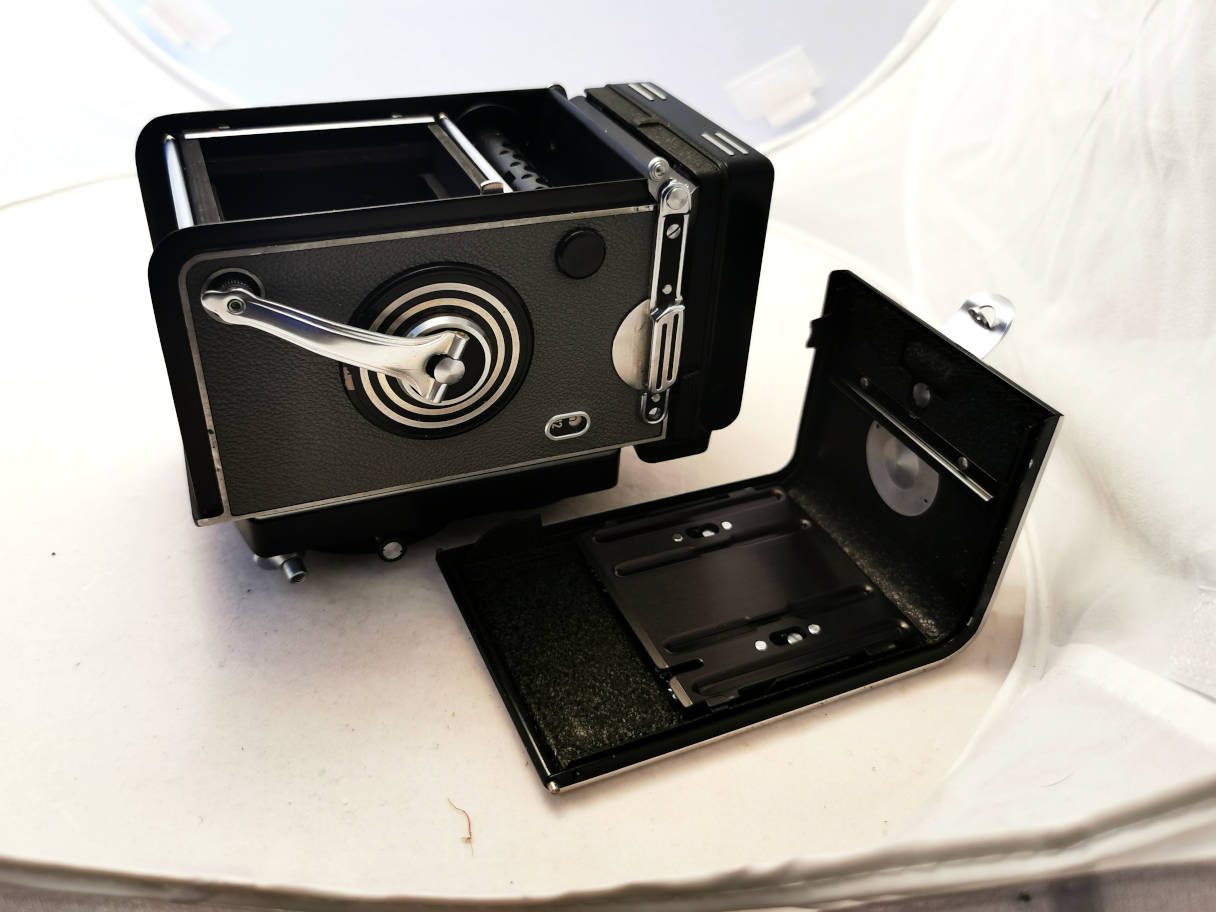
Can be easily unhinged.
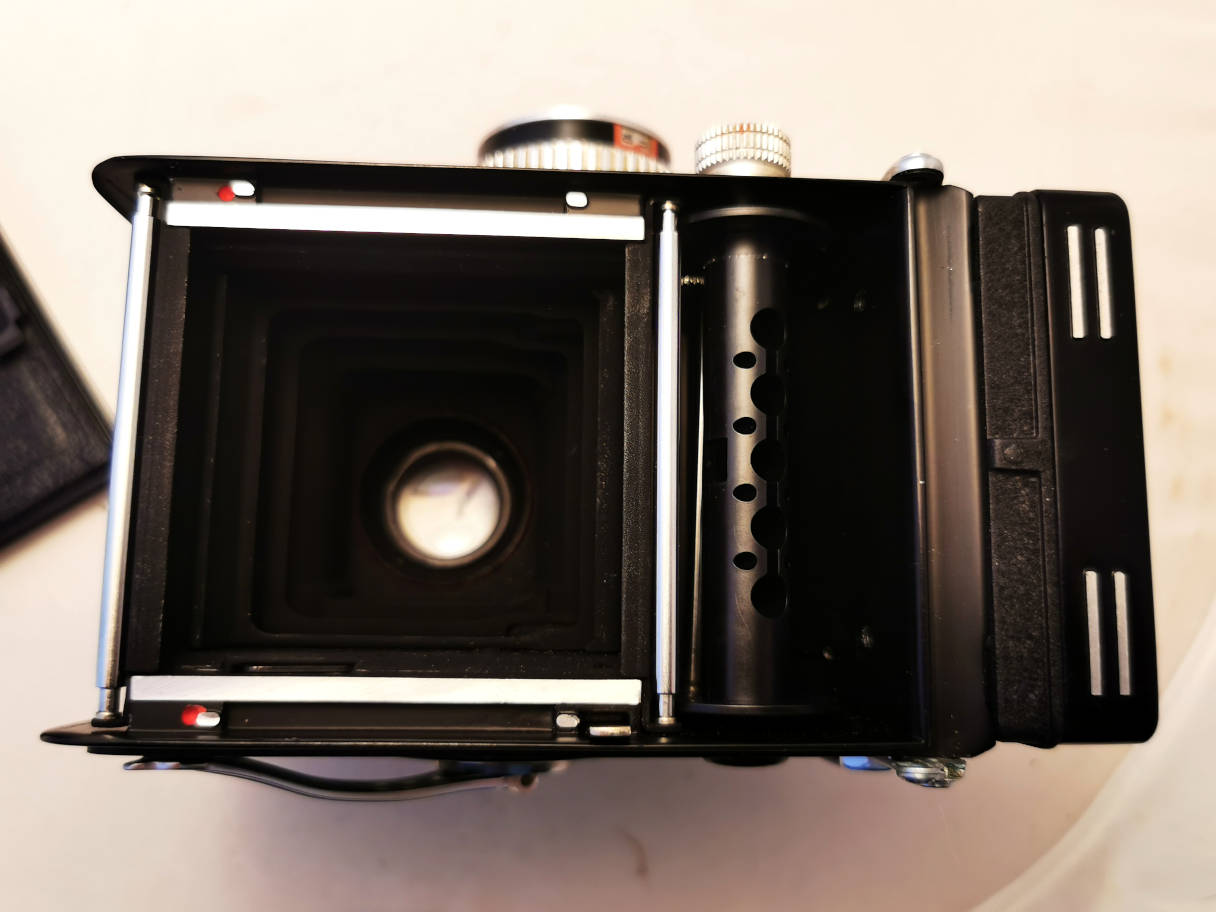
Film wind chamber.
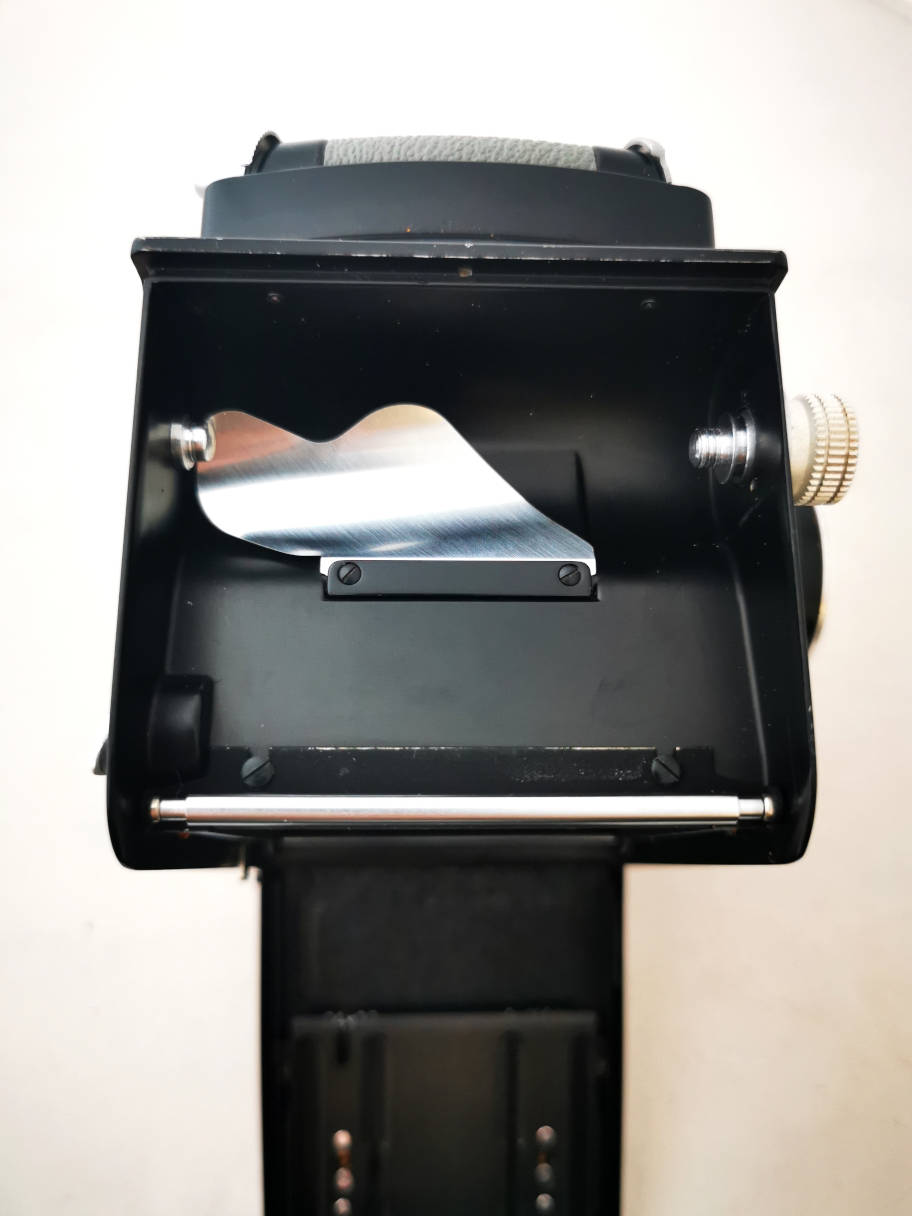
Film supply chamber.
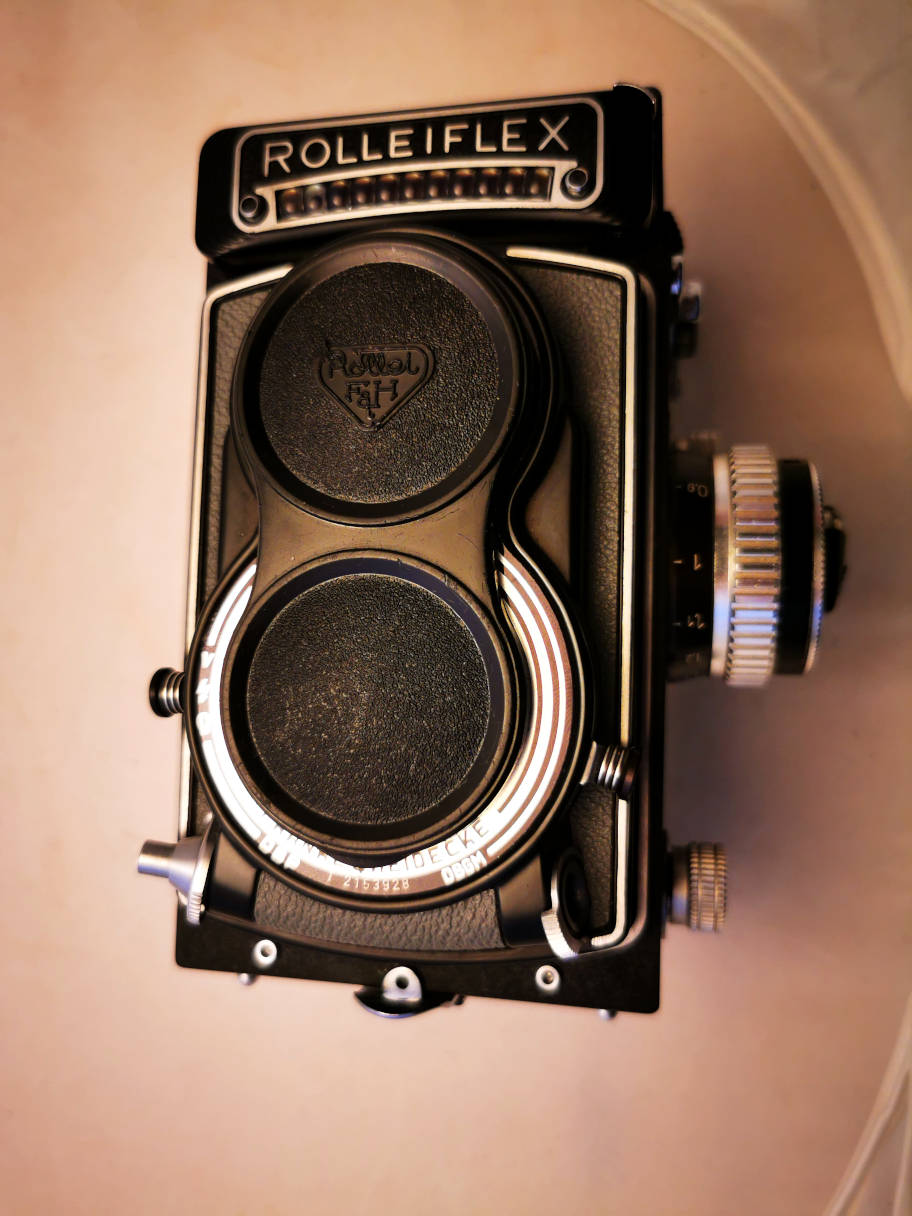
Plastic cover.
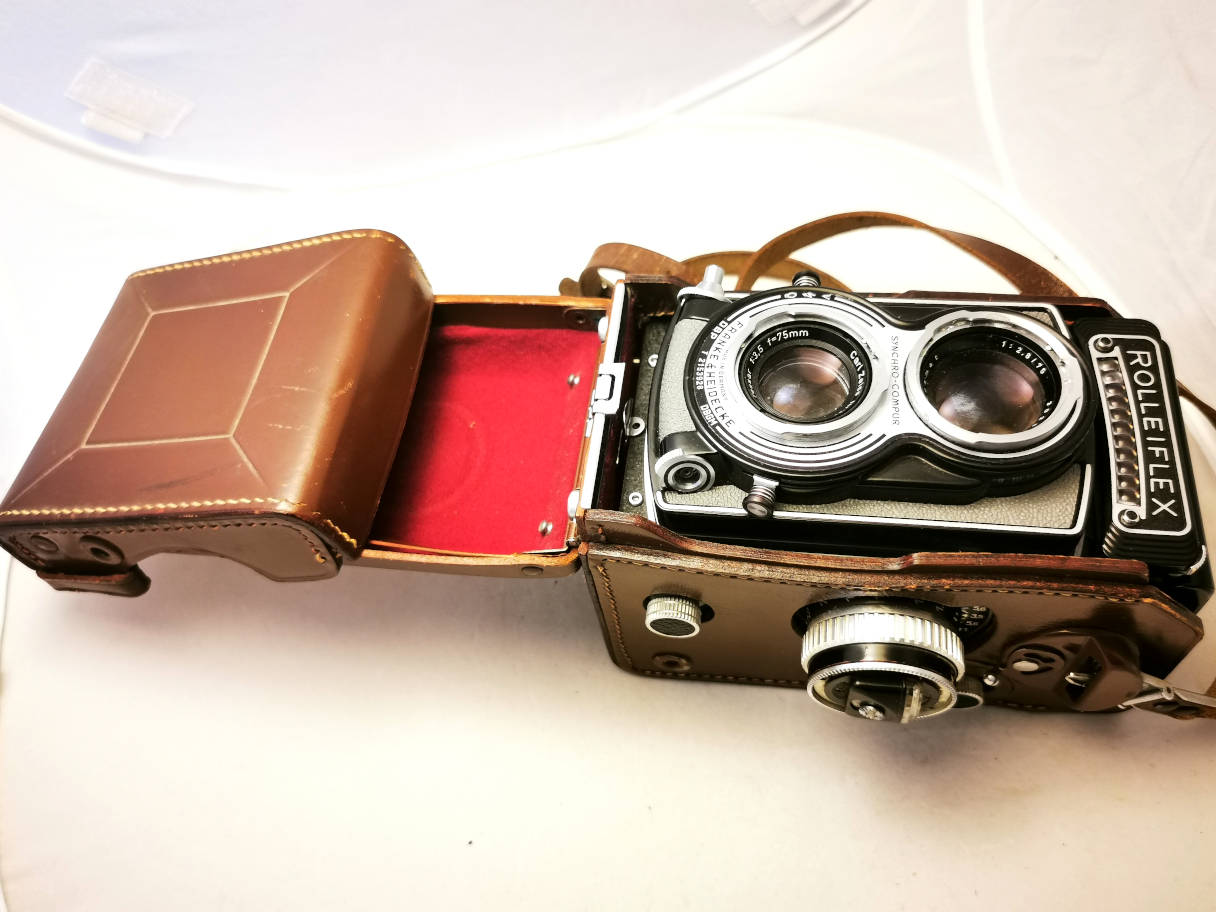
Leather case in ready position.
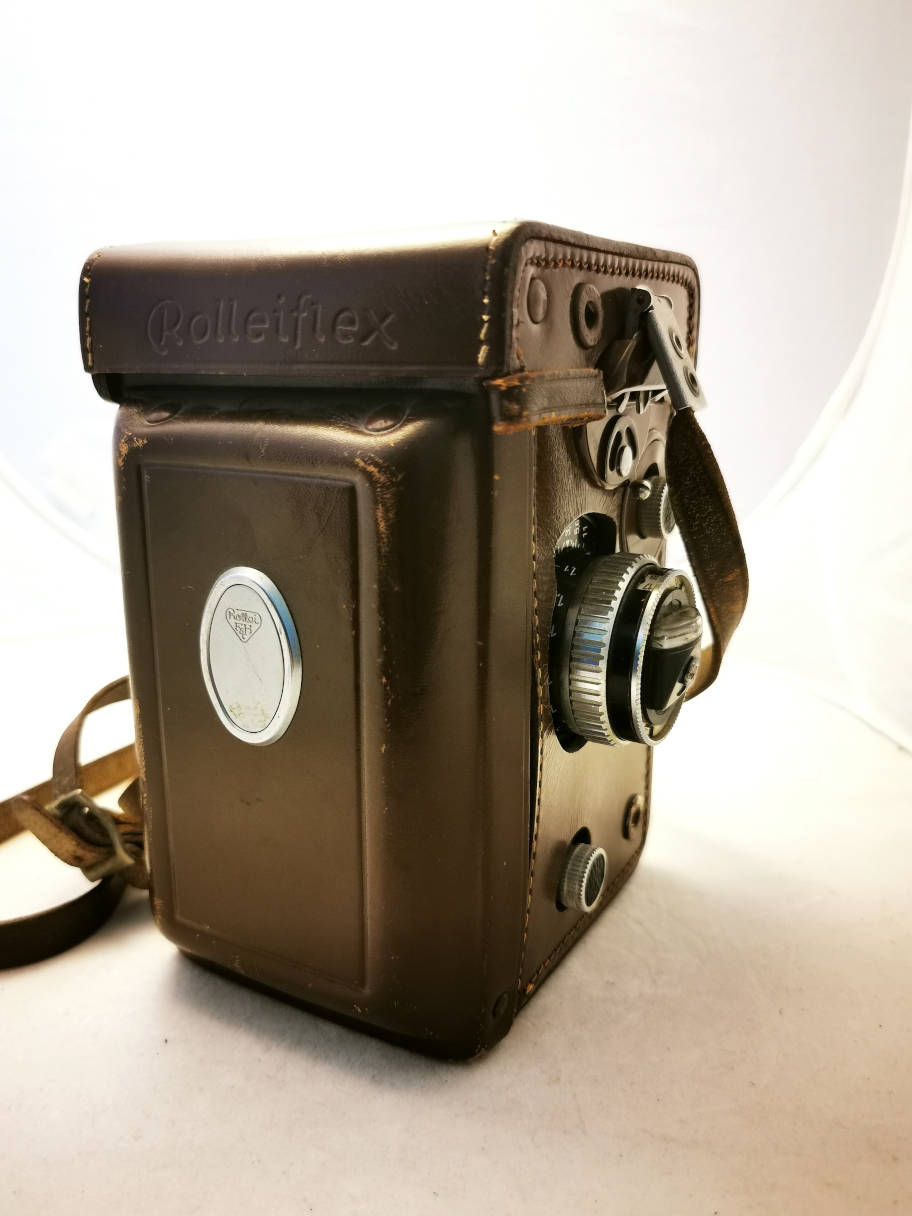
Case closed.
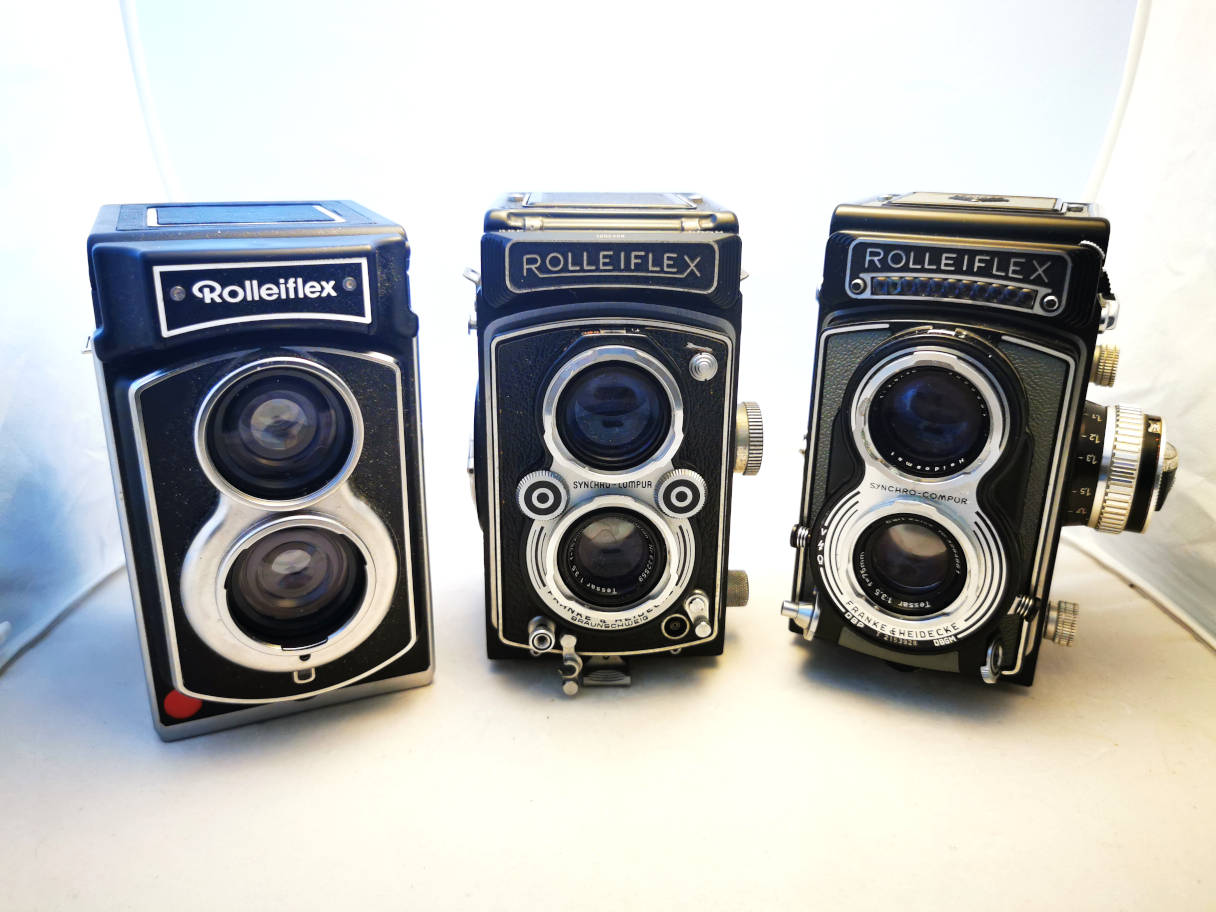
Camera with another Rolleiflex, an Automat 4 and an Instant camera from
Mint which isn't a Rolleiflex but was allowed to bear the name.
The
Rolleiflex Automat 6x6 TLR camera is designed for easy
photographing.
Handling is easy and logic. To put a film, open the back flap and
unhinge it. Put the
winding spool into
its place, there is a peg to retract. Put the film spool into its
place, there is a peg to retract as well. Engage the film leader into
the winding spool
turn slowly until the arrow appears on the backing paper. Make it match
with the red points on either side of the film plane near the
bottom of the film plane. Close the back and wind until it stops at no.
1. Put the crank into its rest
position. Ready for the
first shot. Set time/aperture value. Focus on the ground glass by
turning the knob on the side.
Take your
photo. Wind until it stops at the next number and put the crank into
rest position again. When all of
the 12 pictures are taken, wind on for several
turns, take out the spool.
Picture quality is really good, no doubt about that. Build quality as
well, this one is more than 60 years old and still works perfectly. Having a meter in the camera is a major advantage.

























